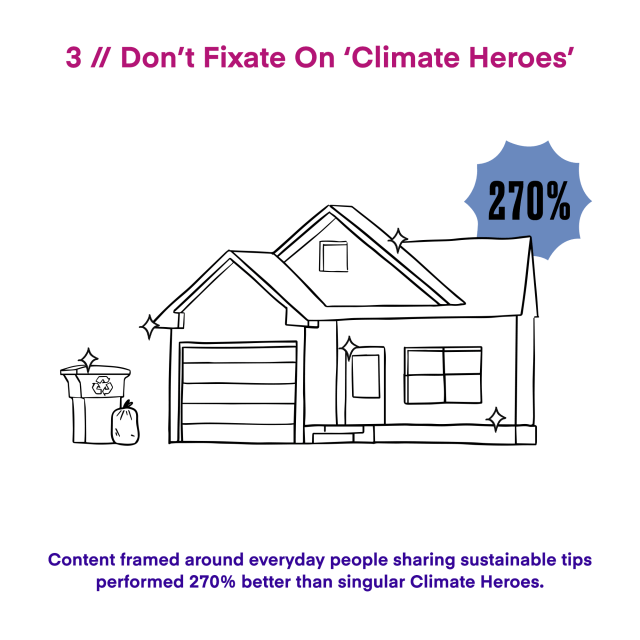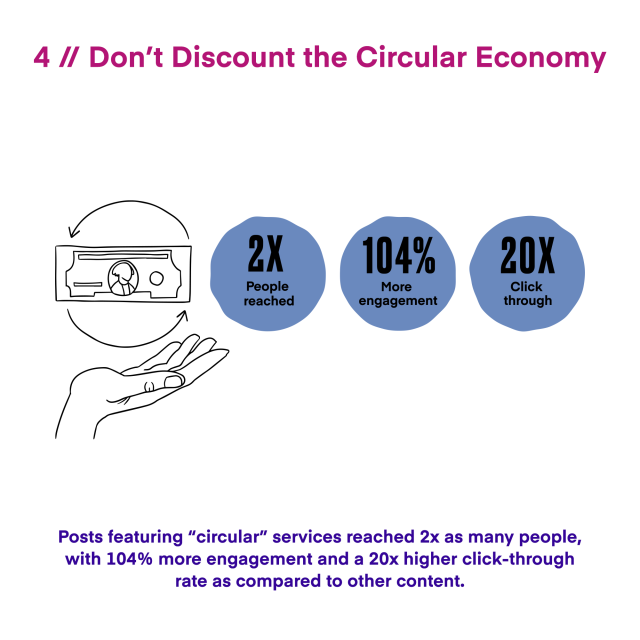Climate communicators have been doing it wrong.
That's the upshot of six months of actionable and often contrarian insights produced by our team at The Cool Down (TCD), the first mainstream climate brand. We've gleaned these data points by analyzing audience behavior — views, clicks, shares, sign-ups, and more — across thousands of articles and social posts reaching upward of 20 million people.
Through TCD's proprietary data stack, called GreenScreen, we're uncovering the climate information people actually seek, the stories they actually engage with, and the choices they actually make. Here's the big picture:
People do care about climate change and sustainable living, but only when we bring those issues straight to their backyards.
To move the conversation forward, we're presenting five data-driven course corrections. In short, these are the five things climate communicators should stop doing immediately if they're serious about reaching a mainstream audience.
1. Don't ignore self-interest
TCD's data makes a resounding case for the idea that it's easier to move the needle by playing to people's self-interest rather than asking them to do something "for the planet."
When choice-oriented content is framed with a selfish value proposition — like saving money, saving time, or protecting your immediate family — it reaches a median of six times more people on web and drives five times more engagement on social than when framed around the idea of environmental or planetary impact.
Meanwhile, content framed around risk awareness and disaster preparedness overperforms the baseline by an average of 40%.

2. Don't underestimate baby steps
Anyone who's ever worked in climate communications has, at some time or another, been overwhelmed by the scope of the challenge. But the massiveness of our climate problem doesn't mean that each individual solution requires a massive effort.
On the contrary, there are many small and often painless choices that all of us can make to move the needle in our daily lives, and TCD has found that mainstream audiences are willing and ready to act through baby steps rather than seemingly intimidating lifestyle overhauls.
At the data level, content focused on simple, often clever ways to live and consume more responsibly — such as easy tips to reduce food waste or chemical-free cleaning hacks — drives 115% more audience and 96% more engagement than all other content types.
None of this is to say that hacks alone can solve our climate problems, but easy solutions can be a top-of-funnel gateway to deeper awareness and more meaningful action.

3. Don't fixate on 'climate heroes'
Understandably, climate communicators often focus on climate heroes, highlighting the individuals who have devoted their whole lives to climate solutions. But for most readers, the real "climate heroes" are the people living next door to them.
Mainstream audiences are far more interested in how relatable home gardeners, home chefs, TikTokers, Redditors, and Instagrammers are making changes in their lives, and they can be powerful messengers for everyday change.
For example, TCD content framed around a singular "Climate Hero," on average, performs 20% below the baseline, while content framed around an everyday person — such as a Reddit user sharing their sustainable tips, swaps, and thrift store finds — performs 270% better.
This is not to say that individuals alone can solve our climate crisis or that everyday people should carry the burden. In the end, a lot of change needs to come from corporations and governments. But the more the average person engages in climate actions, the more we can pressure large corporations and policymakers to protect our planet.
That's why climate communicators must learn to highlight small, doable changes while also being sure to emphasize that we're not blaming everyday people for this crisis.

4. Don't discount the circular economy
The "circular economy" refers to companies and services that aim for "regenerative" production — developing goods without waste or pollution, reusing materials, and restoring our planet's natural systems. It's grown in popularity in recent years, as mainstream brands like Sephora, Walmart, and even Amazon have embraced recycling-based business models.
Our data shows that Americans are resoundingly ready to participate in and profit from consumer-based circular services — and, even better, that this participation can be a gateway to more meaningful forms of attention and action.
Content showcasing circular services — everything from boutique donation programs to buyback programs at national retailers — has reached an average of twice as many people and elicited 104% more engagement than other types of content.
Even more promisingly, content about circular content is 15 times more likely than all other content to build long-term relationships with casual viewers — such as getting them to follow a social account — which suggests that the mainstream appeal of circular services is an excellent starting point for anyone hoping to make readers more aware of the way their life choices impact the world around them.

5. Don't lean into 'doomerism'
Our data indicates that when we show people a future that is happier, healthier, and more high-tech, they're eager to embrace it and take the necessary steps to get there.
On average, articles featuring a "futuristic" subject matter — such as solar-powered cars, renewable energy-fueled cities, and gas-less gas stations — have reached 790% more people than baseline TCD content. And social posts about the same subject matter have generated 119% more engagement while reaching an audience that's 73% bigger.
The key here isn't to sugarcoat our current, troubling situation or to convince readers that this idealistic future will happen without change — it's about showing them what their future could look like if we all work to build it together.

The bottom line
Most people's climate journey starts relatively simply — whether it's having your first baby and realizing how much waste you produce to buying an EV so you can save money on gas. What we've found is that there's a huge opportunity to connect people at the start of that journey, giving them a community in the millions of us who are now on that same exact path.
By setting aside personal ideology and using data to understand the way real people are motivated, inspired, and moved to action, climate communicators can build a big tent that welcomes any and all comers who believe in the cooler, cleaner future we're all building together. In the meantime, we encourage you to send any input or thoughts to us at: brief@thecooldown.com.
Join our free newsletter for cool news and actionable info that makes it easy to help yourself while helping the planet.

